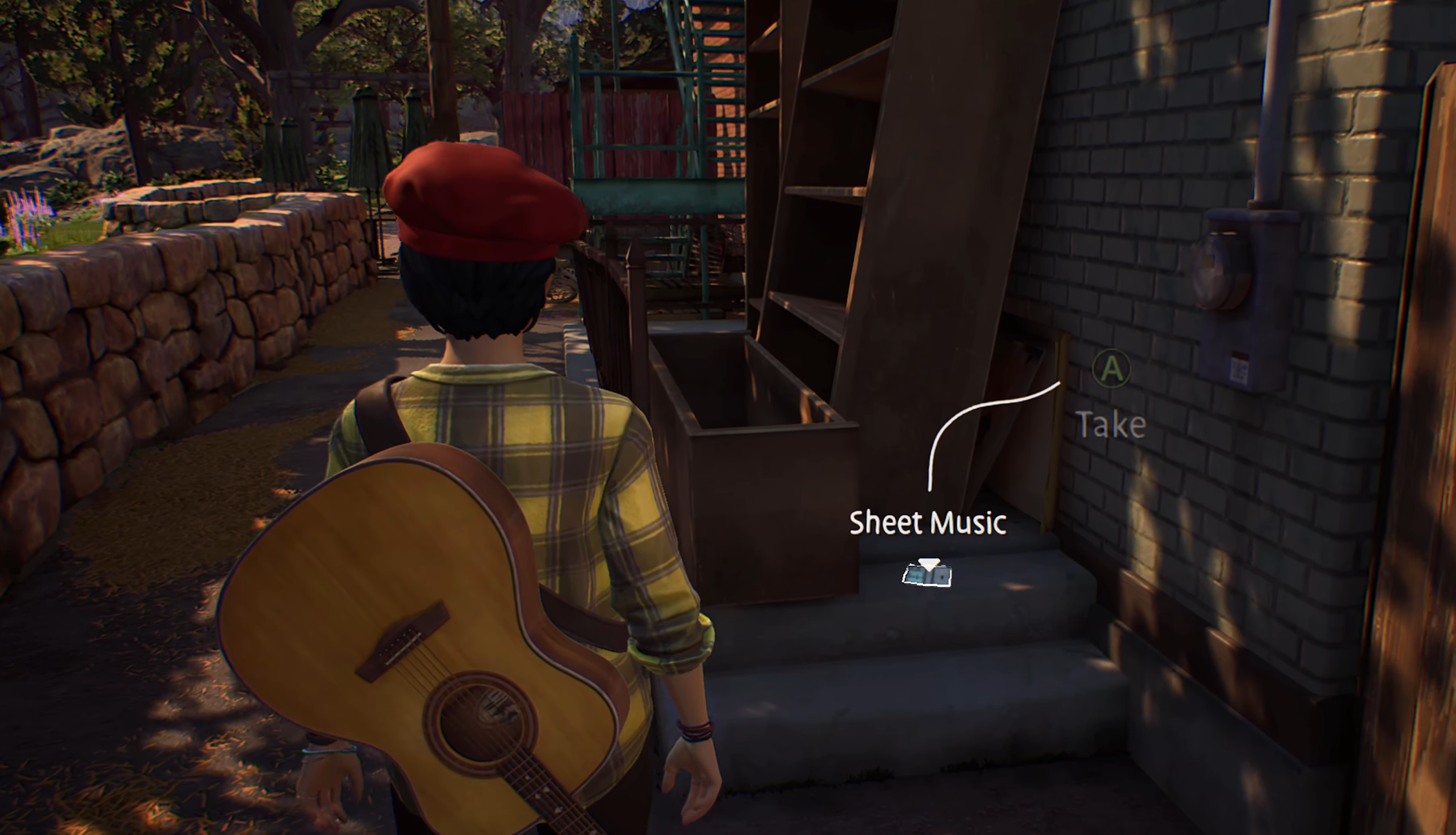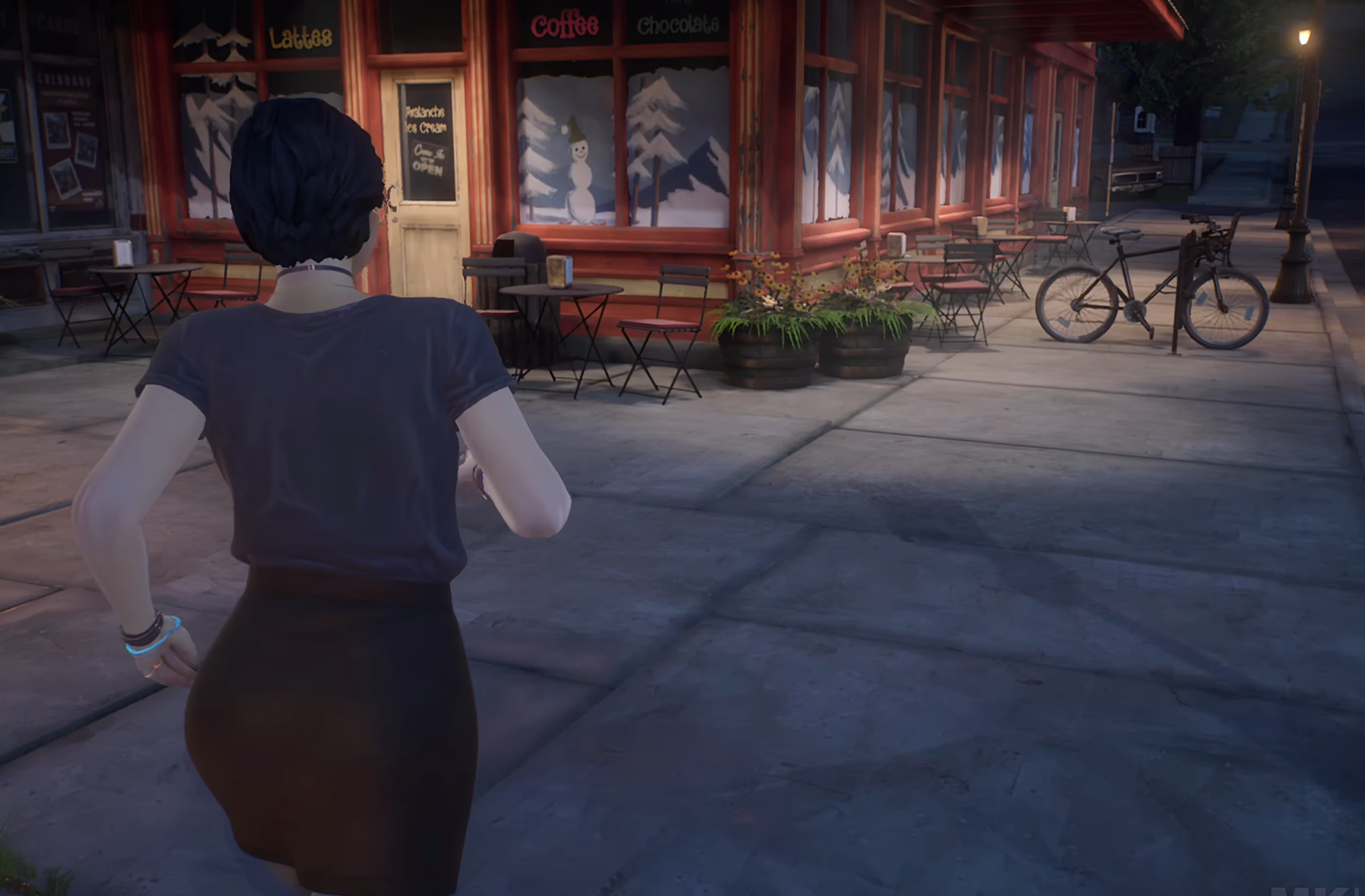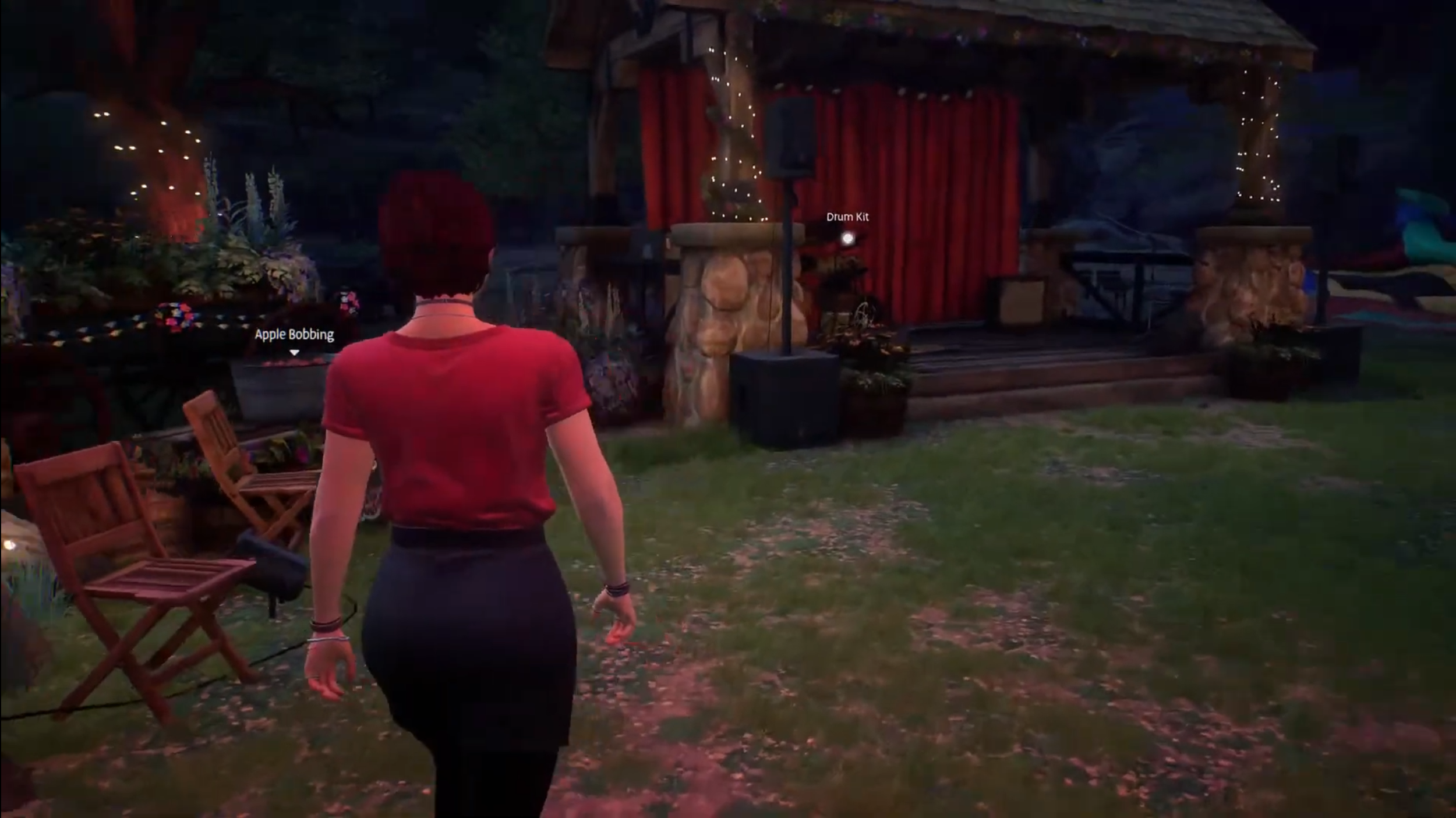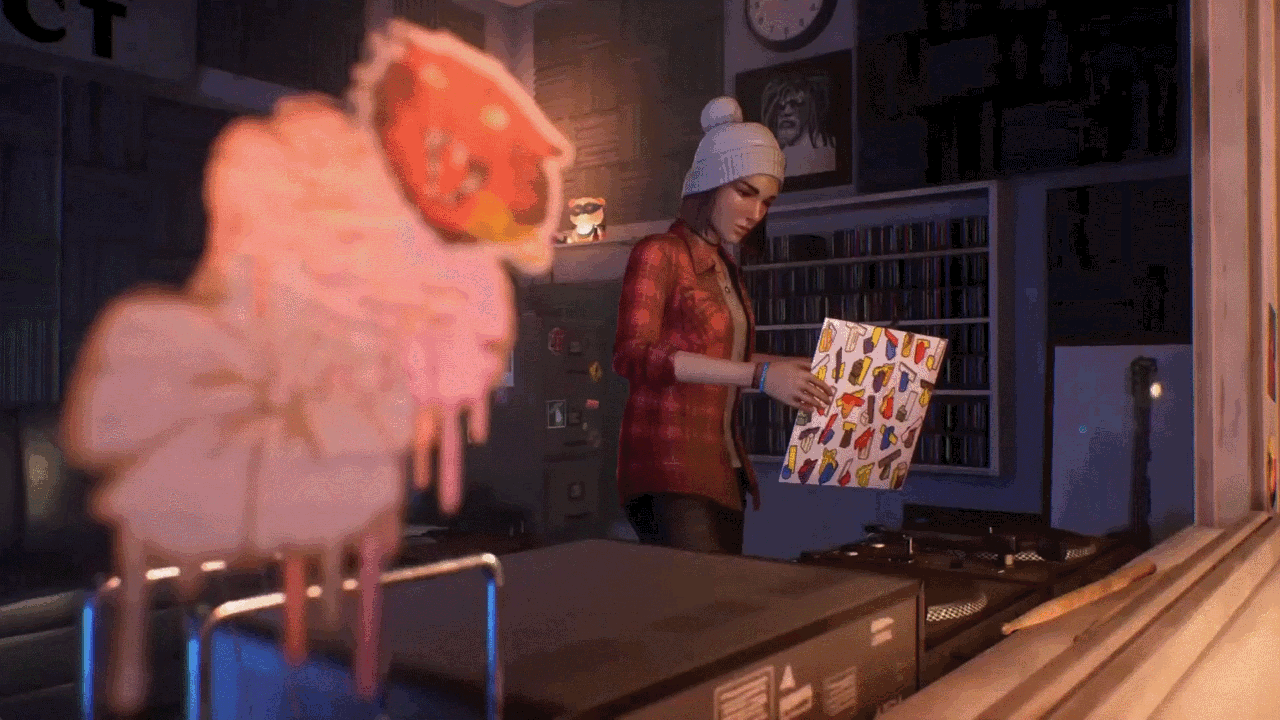Life is Strange: True Colors and Wavelengths
Life is Strange: True Colors is a narrative adventure game that I worked on while at Deck Nine Games. As a level designer, my responsibilities were importing the scenes into Unreal 4 from our proprietary scriptwriting tool Playwrite, setting up and fixing logic for the scene in our cinematics editor Storyteller, implementing interactable objects and tweaking them for the smoothest user experience, and handling the collision and navmesh.
During my time at Deck Nine, I had gained a reputation for being knowledgeable with our tools, with a number of people from different departments coming to me for help. I was also able to demonstrate my scripting abilities and propose improvements in our tools, which resulted in my promotion.
Designing for Hubs
In True Colors, there are several points where the player can walk around the main street of the game’s town, Haven Springs. While this is a great environment that gives a lot of life to the setting, it introduced a number of problems with the design, namely that the player can walk anywhere.
One of the first tasks I was assigned was to come up with “blockages” on the various sidewalks in order to communicate the boundaries of the playspace, using already-made assets as much as possible. This task pushed me to think in a very resourceful manner, and gave me the opportunity to familiarize myself with a great deal of our project files.
Perspective Shift
Prior to True Colors, I had only worked on first-person games, and while I had no problem getting to work on most tasks, I started to pick up on a lot of subtleties that came from working in third-person.
Because first-person games have the camera and the player’s head in the same position, there’s no need to distinguish between the two; however, in third-person, the camera position was a couple of meters up and to the right of the character mesh, and not at the character’s head. Despite this, we were using triggers based on the collision that surrounded the character mesh, even when it controlled the visibility of something. To compensate, I rotated visibility volumes for our interactable objects clockwise when visible around corners.
Wavelengths DLC
After finishing up the base game, I was moved onto the Wavelengths DLC, which had the player taking control of a different character, Steph, as she starts working at a record store with a radio station. Though we reused a locale from True Colors, we were able to add several features that kept things interesting.
One of these was the ability for the player to place vinyl records on turntables to play on the radio. Because there were two turntables which may or may not have already had a record put on them, several modular cinematics had to be made in order to make it look as natural as possible. Getting the logic right for this was crucial, and required a lot of communication with cinematics and programming.






